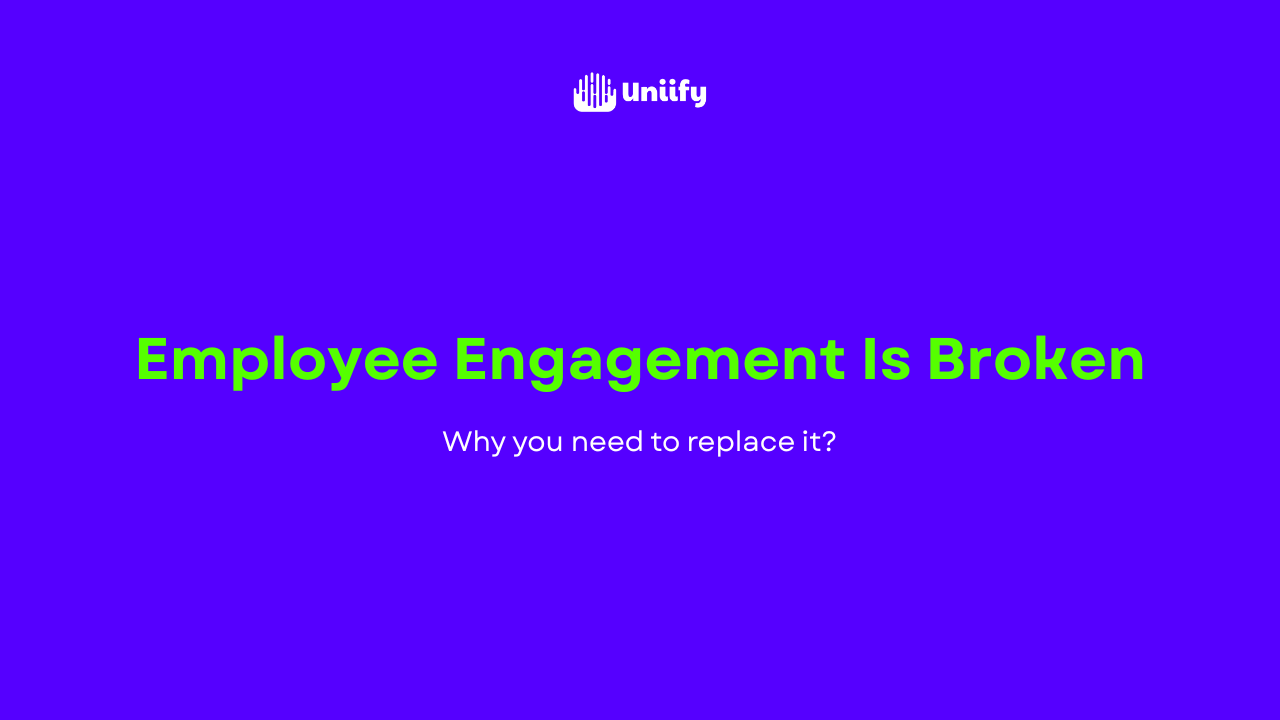For years, employee engagement has been the north star of HR.
We measured it, gamified it, and celebrated it as proof that people were connected to their work. But the workplace has evolved faster than our definitions.
Today, employees aren’t asking for more engagement. They’re asking for a better experience.
And the difference between those two words - engagement and experience - is shaping the future of work.
Engagement is a Moment. Experience is a Journey.
Engagement is like applause at a concert - energetic, visible, but fleeting.
Experience is the music itself - the rhythm that sustains the feeling long after the lights fade.
Engagement measures how employees respond.
Experience designs what they respond to.
When HR focuses only on engagement, it’s like asking employees to smile without giving them a reason to. Experience, on the other hand, creates the conditions where that smile is genuine.
The Old Equation: Engagement as a Metric
Traditional engagement programs were built around measurement. Surveys, dashboards, participation rates. The goal was to track emotion.
But over time, this approach began to flatten people into data points.
We started counting voices instead of listening to them.
In many organizations, engagement became a campaign - something to manage rather than something to live.
That’s where it began to lose its meaning.
The New Equation: Experience as a System
Employee experience shifts the focus from outcomes to environments.
It asks: What do employees feel every day? What helps them thrive, not just perform?
Experience integrates every touchpoint - from onboarding to growth to wellbeing.
It blends technology with empathy.
It designs work as something people participate in, not endure.
While engagement tells you what people feel, experience tells you why they feel it - and how to make it better.
How HR Can Bridge the Gap
The good news? You don’t have to choose between engagement and experience.
One fuels the other - if built in the right order.
Here’s how HR leaders can evolve:
- From periodic surveys to continuous listening
Create systems that sense emotion in real time, not just once a year.
A short weekly pulse or emotional check-in says, “We’re paying attention.” - From motivation to meaning
Engagement often tries to push people toward performance.
Experience invites people to find purpose in performance. - From programs to rituals
Replace large engagement campaigns with small, repeatable acts - micro-recognition, energy checks, and daily wellbeing cues. - From reaction to design
Don’t wait for disengagement to show up in reports. Design daily interactions that prevent it - feedback loops, support prompts, authentic leadership moments.
When HR designs experiences, engagement becomes a natural side effect.
Everyday EX: Where Engagement Evolves
At Uniify, we see engagement as the result of great experience.
That’s why our Everyday EX framework focuses on five continuous rituals - Listen, Engage, Care, Empower, and Recharge.
It helps organizations move beyond measurement into meaning, building workplaces that feel alive every day - not just during engagement season.
When you stop trying to manage engagement and start nurturing experience, you don’t have to chase connections.
You create it.
Human Signature
Because employees don’t remember the campaigns you ran.
They remember how work made them feel.
In Essence
- Engagement measures moments; experience designs them.
- Experience turns connection from an outcome into a habit.
- HR’s new role is to shift from managing metrics to shaping meaning.
- When experience grows, engagement follows naturally.
That’s why we built Uniify - to make Everyday EX real, measurable, and human.








